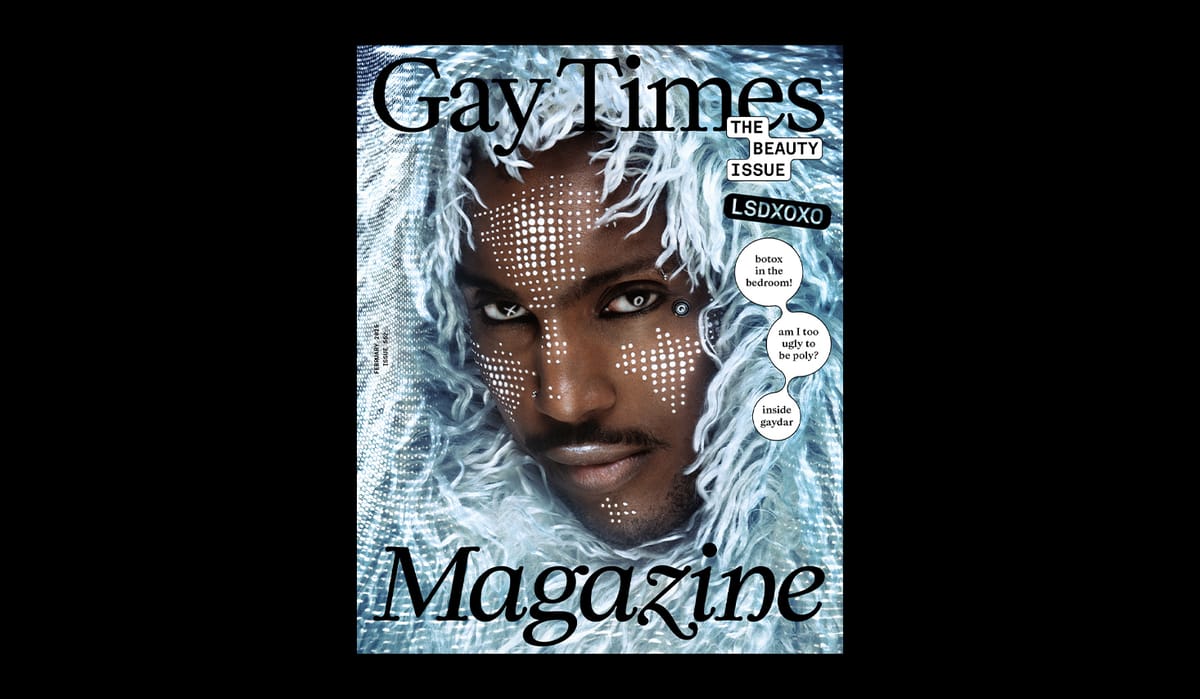Editor's Letter, February 2025: Can the queer community find liberation through beauty?
What to expect from GAY TIMES' Beauty Issue, a series of thought-starters exploring the painful weight of beauty and how the queer community can find self-expression.

What to expect from GAY TIMES' Beauty Issue, a series of thought-starters exploring the painful weight of beauty and how the queer community can find self-expression.
Words by Megan Wallace
In 2025, we’re all in the pursuit of beauty. Living our lives – at least part of the time – online, we know that the machine vision of the algo is our most cold-hearted critic: promoting bodies who have proximity to whiteness, skinniness and cisness and ruthlessly deprioritising the rest.
But, for queer communities, the price, pain and pay-off beauty can be huge, both URL and IRL – after all, whether we’re desired can be the difference between violence and safety. Beauty is a currency, it helps us shimmy out of difficult scenarios and ascend in a world where surfaces matter more than they should. While we can use beauty to our advantage, it can trap us in a dangerous bind: encouraging us to self-commodify, flatten down parts of ourselves, and compromise who we are for the gaze of another.
Traditionally, we’ve been told to not pay too much mind to appearances and to look for the beauty within. This advice overlooks the political role that beauty plays in categorising and stratifying us. Inextricable from social mores, beauty is a vector through which our ‘acceptability’ is surveilled. Every day, we’re scanned, looked up and down, as those outside of our community – judged, policed, and punished if we step beyond the lines of gender and sexual normativity.
Beauty is also a finite resource. Increasingly, it can be bought and – with a generous injection of cash and Botox – we can stretch out its lifespan throughout the decades of our life. Despite all this, there’s still not enough beauty to go around. Not all of us can be considered beautiful in the traditional sense: we have to grapple with the limitations of our bodies and how they don’t always match up to what we want for ourselves.
So, what’s the answer to it all? Finding a way to coexist with how beauty operates, in the social sense, and finding a way to recuperate more personal, individual responses to what it can mean to us. Our beauty issue walks the tightrope between these contradictory forces – delving into the way that the community is impacted by beauty standards while exploring how we reclaim beauty for ourselves.
The issue is headed up by LSDXOXO who stars in a beauty shoot lensed by Davy Oldenburg, with beauty by Matilda Mace. A subversive, daring voice within nightlife, the DJ-producer has brought the hedonistic spirit of queer clubs into the mainstream and speaks to Shaad D’Souza about his horrocore aesthetic influences and levelling up his music artistry.
Within features, Beth Ashley explores Botox’s journey from aesthetic treatment to sexual aid as she charts the explosion of interest in Holetox.
Elsewhere, Jake Hall looks at the rise of trans-centred, low-cost fitness spaces and the role that fitness can play within gender-affirming treatment journeys. Finally, polyamory educator Leanne Yau consoles a would-be non-monogamist who’s concerned about not being attractive enough to explore polyamory.
